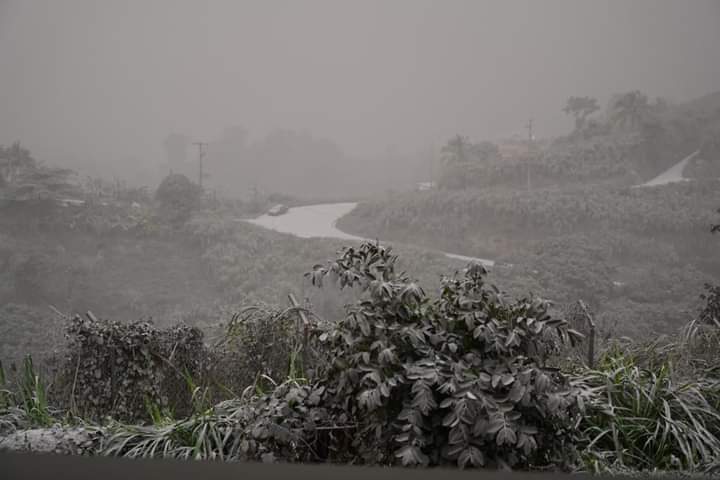Scientists monitoring the La Soufriere volcano where seismic activity has remained low for more than a month, today warned that persons would not be allowed into the Red Zone “for the foreseeable” future.
Volcanologist Dr Adam Stinton, speaking on the state-owned NBC Radio, said that while he is aware many people would have been evacuated from the area when the volcano erupted violently on April 9, it is still not safe for them to return to their homes.
“Certainly in the foreseeable future….re-occupation of parts of the Red Zone…is certainly not possible at this time,” Stinton told radio listeners, including acting Prime Minister Montgomery Daniel, who was hosting the programme in the absence of Prime Minister Dr Ralph Gonsalves, who is overseas.
The volcanologist said that the main reason for adopting that position is the lack of monitoring equipment that had been destroyed by the volcano.
“In order for us to be comforted …that the volcano has not changed its status and become active again, we need to re-strengthen our networks, as I am sure you may be aware we have lost several instruments and we are still in the process of organising plans and beginning work to prepare for the re-installation of at least three to four of the instruments.
“We need to be able to get those instruments back up and running and get the data back to the Observatory in real time for us to start to consider the next stage of the re-occupation of the northern part of the island.
“It is important that we have as strong as possible a monitoring network in order for us to be able to pick up even the smallest indication that something may be changing within the volcanic system,” he said, adding that the new instruments would be installed at different points around the volcano.
Stinton said that tests undertaken on Tuesday showed that there had been 402 tonnes of sulphur dioxide and according to the latest bulletin by the Seismic Research Centre (SRC) of the University of the West Indies (UWI), thermal anomalies continue to be detected by the NASA FIRMS alert system.
It said these have been persistent since the April 22 explosion. Thermal anomalies indicate that there is a source of heat within the crater and are most likely from a small body of magma left over, close to the floor of the Summit Crater.
The SRC also warned that the volcano continues to be in a state of unrest and that escalation in activity can still take place with little or no warning the volcano may resume explosions with less than 24 hours of notice.
Meanwhile, the Roads, Buildings and General Services Authority (BRAGSA) said it has started a seven-day road cleaning programme, employing more than 6,000 people.
It said that the project will involve the cutting of trees, and cleaning of roads in all 15 constituencies over the next seven days and will be done at an estimated cost of three million EC dollars (One EC dollar =US$0.37 cents).
BRAGSA’s communications officer, Rohan Cupid said work will only be done in the Green, Yellow and Orange Zones and that emphasis will be placed on the cleaning of the Orange Zone in anticipation of the return of residents to those communities.
When the volcano erupted last month, thousands of people were evacuated and placed in shelters in the capital.

